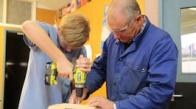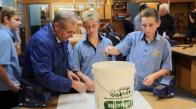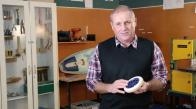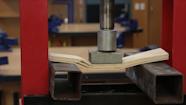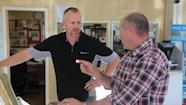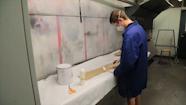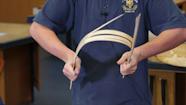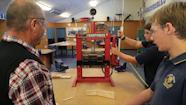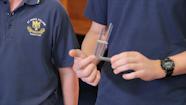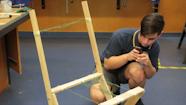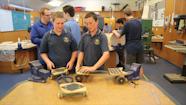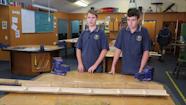Cheryl Pym explores the features of literacy within technology.
Strategies for literacy in technology
Transcript
Cheryl Pym: Students have to write in particular ways in technology. So they’re engaging with tech practice, so they might be writing a brief and some specifications, or describing the attributes of an outcome.
When I ask a student what sort of writing they might be doing, they’re writing to that level or a technical report. The English faculty might be teaching students around language and how to use certain constructs, but only a technology teacher knows what a technical report might look like in terms of external assessment for level one, two, or three NCEA.
So, compare and contrast looks at a particular style of writing in technology where they’re actually taking aspects of an outcome and then comparing and contrasting with another outcome. Only we can teach that. So it’s really important that technology teachers pick up the challenge of literacy inside the learning area.
One example of what I’m talking about around embedding the literacy is a school who recognised that the year 11 students really struggled with writing a report. So while they saw they could actually put a bit of a bandaid fix for the year 11s, a writing frame to structure the report, they then unpacked the literacy data around their junior school and saw that some of these students had very poor literacy skills so that they would to then need to address literacy in technology at the junior end and scaffold that through to the senior school – otherwise all they were ever going to do is put a bandaid on it and it would actually limit the student achievement.
They devised a range of strategies that they shared across the faculty, so they all had a common approach. They gave students the experience with handling particular artefacts so they were looking at attributes and then they would give them some word maps. So they built their vocab, they then modelled a sentence structure so that they could then write a sentence using some of the words and then they built up a mini-report, if you like, by describing this particular toy that they were looking at. So they had handled the material in terms of being able to touch it, and unpack it, and undo the bits and pieces of the outcome and then choose words and structures that actually helped them then shape a piece of written work to show what they understood. So it was, if you like, a shared experience with the faculty, they all had these collection boxes, and then they all supported their students in the different discipline areas to actually unpack the language, and then rebuild it, and have some written evidence with the student.
Related videos
Combining knowledge and practice (01:58)
Steve Andrew explains how understanding materials is essential for effective technological practice.
Linking hands-on experiences and understandings (03:54)
Hands-on experiences allow the students to see materials understandings in action.
Play, experiment, explore (02:55)
Steve Andrew lets the students see, feel, and play with products to develop their understandings in materials.
Finding materials to meet the specs (02:36)
Steve Andrew shares how students identify material specifications in a brief and then test materials to find those that are suitable....
School–industry relationship cuts both ways (03:36)
Steve Andrew and Terry Rillstone describe the way the relationship between St John's College and The Shop has benefits for them both....
Pushing the boundaries with materials (02:53)
Steve Andrew describes how his senior students have the confidence to select and work with unfamiliar materials.
Exploring unfamiliar materials (02:44)
Year 12 students from St John's College describe what they know about bamboo and how they are applying this knowledge to their projects....
Students and teachers talk about testing materials in year 11.
Manipulating, forming, and transforming
Students in year 10 describe manipulating, forming, and transforming materials.
Evaluating materials for an outcome
Steve Andrew and students talk about using their knowledge to test materials for their projects at year 12.
Year 10 students describe some of the attributes for the snake skates they are developing.
Senior students select their own issues
Year 12 students talk about the issues that they have selected for their projects.

